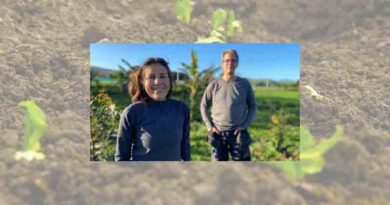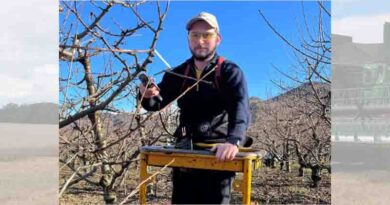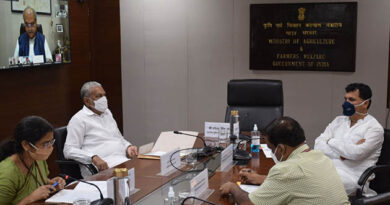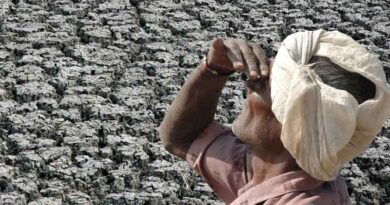Passionfruit orchard unlocks a passion for plants
17 July 2023, NZ: Trading a career in IT for horticulture was a daunting step for a mother of a young child, but buying an orchard revealed a knack for growing plants for one Bay of Plenty woman.
Rebekah (Beks) Vlaanderen and Graeme (Hoppy) Hopcroft own a 9-hectare property at Oropi, near Tauranga. About half a hectare is planted in passionfruit, tamarillos, bananas and chillis.
When the couple first took over the orchard, there were around 450 passionfruit plants.
“I diversified to spread the risk a little bit, and now also grow tamarillos, dwarf Cavendish bananas, and rocoto chillis. When I first started diversifying, I was very cautious, but it has snowballed in the past year. The passionfruit hasn’t been doing too well so when I saw the other crops doing quite well, I decided to put more of those in.”
Passionfruit yield has declined significantly in the orchard due to passionfruit wilt which is affecting orchards across the Bay of Plenty in the past few years.
Passionfruit wilt (or Fusarium) is a fungus that infects the plant through the roots, travels up the plant stem and causes the leaves to yellow, killing the plant.
“Once it’s in the soil, it’s there for good. The purple passionfruit (Passiflora edulis) is highly susceptible to passionfruit wilt. In some orchards it has wiped them out within six months, every plant has died. In my orchard it has been a slow decline over a few years – I didn’t recognise it at first … some plants died quickly but others are still alive and sort of growing but not doing very well.”
“It’s been very difficult going from such a highly producing orchard to basically nothing this year.”
Christine Herbert and Diana Pearse’s Cosy Cat Orchard in Whakamarama west of Tauranga (featured in The Orchardist, April 2021) succumbed to the disease in 2022.
“The first season, 2021, went really well. It was amazing and production exceeded expectations. Covid put a few market access challenges in front of export wholesalers, but the domestic market was strong,” Christine says.
They started noticing vine issues during the 2021 season and lost about 25 percent over that time, and over the rest of the year, despite doing remedial work, didn’t arrest the problem enough and they headed into their second season with only 25 percent of their vines left.
“So, the second season produced only 10 percent of what we did the first season and the rest of the vines fell over,” Christine says.
The couple made the hard decision to exit the industry as growers.
Passionfruit wilt “is just devastating,” Beks says.
The NZ Passionfruit Growers Association is trialling rootstocks from Australia in the hope this can combat passionfruit wilt.
Beks was the president of the association for four years, but before she left that role last year, she started a rootstock project. The project trials the Australian passionfruit variety used there as a rootstock and how it will perform in New Zealand conditions.
“We’re trialling that in orchards at the moment, we’re now 12 to 18 months into the project. My orchard is one of those trialling the rootstock, but we don’t know if it’s going to be too cold here for that rootstock to do well. The solution is a rootstock, it’s just finding the right one.”
Despite the challenge of passionfruit wilt, Beks says growing food is rewarding and full of satisfaction.
When she and Hoppy bought the orchard in 2017, she had never even eaten a fresh passionfruit, let alone driven a tractor or fixed a fence.
“The previous owner built the orchard and offered to teach me. He was here every day for months, helping me learn how to drive a tractor, mix the sprays, drive the ride-on mower, pruning, planting and grading. He taught me everything.”
The orchard is primarily Beks’ domain, with partner Hoppy doing a lot of maintenance work around the orchard while working primarily as a helicopter pilot.
They launched Bay Tropics during the Covid-19 lockdowns to sell the orchard’s fruit, as the independent stores they sold to were closed due to government restrictions, and the export market was strained due to lack of airfreight space.
“The website went well during the lockdowns because people were enjoying online shopping. We partnered up with similar, small commercial growers close by. We had avocados, feijoas, tamarillos and blood oranges; we also had navel oranges, lemons and limes at different times. They were all growers who are small like us, and were having trouble moving fruit on the wholesale market.”
Beks says she thinks those growers liked being able to set their prices, and she then priced them accordingly on the website.
“They had surety for the price they would get. From my perspective, it helped to sell the passionfruit having a variety of fruit available. This year we’ve had feijoas, tamarillos and passionfruit from other growers. I like the idea of working with other growers.”
As for the orchard itself, Beks is now following organic principles and incorporating biodiversity on the property.
“That brings quite a lot of challenges because there’s a lot more to manage, and it’s a lot more labour. It’s much easier to spray the weeds than it is to cut them by hand or mow them. All the extra plants for biodiversity need to be managed, so it’s a lot of pruning and keeping them out of the way.
“You still get disease on the fruit, particularly in the rain. The challenge is keeping the fruit looking nice and keeping the disease off the plants.”
She says having other crops that are doing well helps keep her passionate about her orchard when the passionfruit is struggling.
“I could’ve given up if I hadn’t seen that other things are growing amazingly; we’ve got good soil. We just need to find the right disease-resistant rootstock for our purple passionfruit.”
Also Read: DeHaat partners with Global Bio Agri-Input Innovations to drive sustainability for Indian farmers
(For Latest Agriculture News & Updates, follow Krishak Jagat on Google News)















